This website uses cookies so that we can provide you with the best user experience possible. Cookie information is stored in your browser and performs functions such as recognising you when you return to our website and helping our team to understand which sections of the website you find most interesting and useful.
Petrol cars are holding on – or the Low Emission Zone in Copenhagen
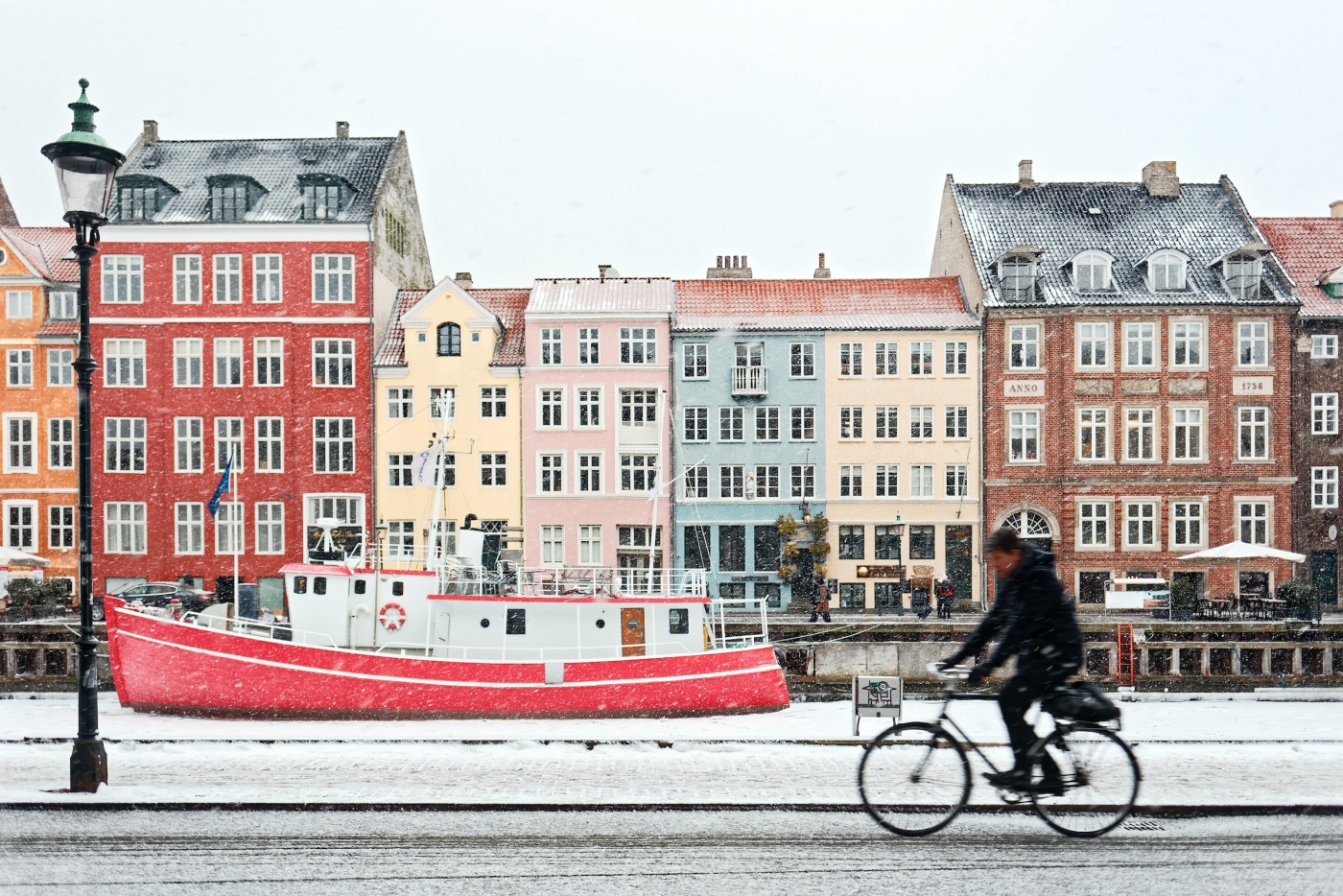
At first glance, the regulations of the Low Emission Zone in Copenhagen appear suspiciously lenient. How did it come to that? Where’s the catch? The answer is simple: the inhabitants of Copenhagen have been offered numerous alternatives to cars and gladly use them. Therefore, it is enough if the Zone excludes only the biggest polluters.
In Copenhagen, restrictions on entry in the Low Emission Zone apply exclusively to diesel-powered vehicles – currently to trucks, vans and buses and only soon will they be extended to passenger cars with this kind of engine. Did Danish engineers elaborate a groundbreaking low emission technology for petrol combustion in car engines? Do drivers in the Danish capital use innovative driving techniques that allow them to restrict the emission of pollutants? Not at all – the explanation is much more prosaic: many people in Copenhagen use means of transport other than private passenger cars, so the goals of the Zone in terms of improved air quality can be met by excluding only the aforementioned types of vehicles.
Conditions of entry to the Low Emission Zone in Copenhagen:
– from July 1st 2023, diesel vans up to 3.5 tonnes must meet at least the Euro 5 standard or be registered for the first time by September 1st 2016 at the latest.
– from January 1st 2022, diesel trucks over 3.5 tonnes must meet at least the Euro 6 standard or be registered for the first time by January 1st 2015 at the latest.
– from January 1st 2022, diesel buses over 3.5 tonnes with more than nine seats (including the driver) must meet at least the Euro 6 standard or be registered for the first time by January 1st 2015 at the latest.
Moreover, from October 1st 2023, diesel passenger cars will have to meet at least the Euro 5 standard or be registered for the first time by January 1st 2011 at the latest – before that, passenger cars, regardless of the type of engine were not subject to any entry restrictions!
It is also worth stressing that as far as vehicles with petrol engines – both passenger vehicles and those with other uses – are concerned, no restrictions on entry to the Low Emission Zone are currently in place, nor are there any plans to introduce them (this applies to the area of the LEZ, as Copenhagen has announced plans to establish a Zero Emission Zone – inaccessible to all vehicles with combustion engines and located in an area different than the LEZ). The extension of the LEZ restrictions to passenger cars and the plans to create a ZEZ are the result of the city’s push to meet the ambitious climate neutrality goal by 2025.
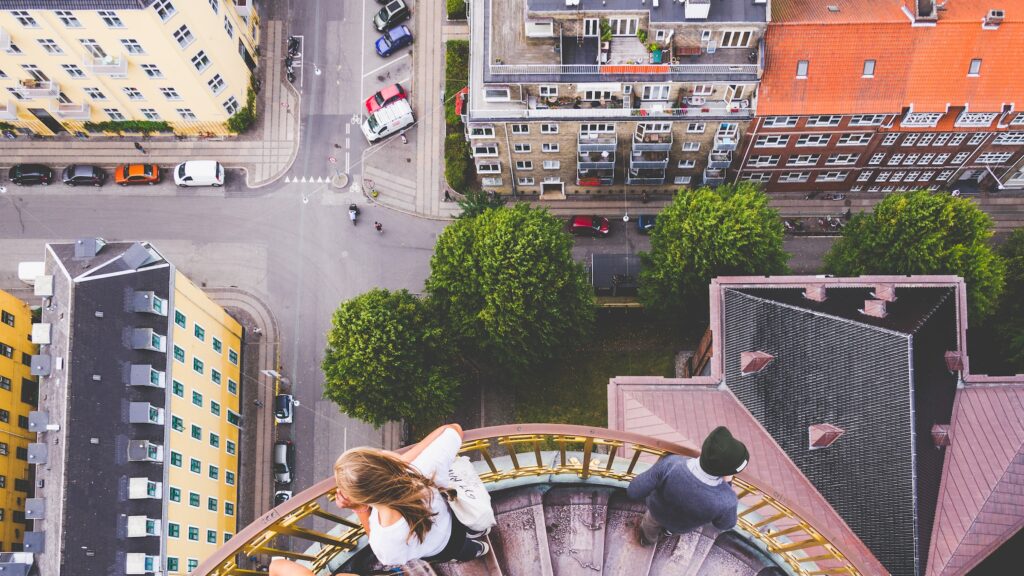
(photo: Shane Rounce on Unsplash)
Without a filter? No, thanks
The key factor in establishing whether a vehicle can enter the Low Emission Zone in Copenhagen is the presence of a particulate matter filter – this means that a vehicle which did not have one when it got out of the factory can enter the Zone only if such a device has been added at a later date (such a procedure is referred to as retrofitting). Exemptions from entry regulations in the Zone apply to vehicles medical and rescue services, uniformed services, as well as to antique cars.
Drivers (from outside Denmark – including Poland – as well) can check whether their vehicles is authorized to enter the Low Emission Zone in Copenhagen by typing their registration number into the online tool available here.
Those who want to enter the Zone with a vehicle registered outside of Denmark have to register it online and confirm compliance with the required emission norms, as well as the presence of a particulate matter filter on the day of the entry at the latest – using the online form available here.
Vehicles that do not meet the requirements for entry in the Zone can get through it only using a designated transit route, which leads i.a. to the terminal of the ferry to Oslo. Entry in the Zone is controlled by a remote license plate reading system. A fine can be incurred both for entering the LEZ with a vehicle that violates the technical requirements and for failing to register it as authorized to enter (fines differ depending on vehicle type – they are higher for tracks, vans and busses, and lower for passenger cars).
The essentially Modest regulations are sufficient thanks to the fact that, simply put, the inhabitants of Copenhagen are not particularly attached to cars. What makes them prefer hopping on a bike or taking the subway? In short: a thick network of infrastructure and integration of various forms of public transport – as well as the convenience of using them.
Transport Copenhagen-style – everything is connected
Copenhagen is one of the European leaders in terms of comfortable conditions for bike use which obviously has an impact on the popularity of this form of transport. The decisive factor is not the total length of bike lanes – it is only a means to an end – but the safety and convenience of riding on them. How do the authorities of the Danish capital ensure that the choice of bike transport is attractive? First of all, they bet on safety and consistent forms of bike lane design. Most of the lanes are separated from both car and pedestrian traffic with curbs (often the bikers are shielded from car traffic by parked cars as well), some lanes are integrated with car roads, specific design rules are also applied to lanes in green areas. The lanes by roads are one way (one lane for each side of the road) and what is of key importance – wide.
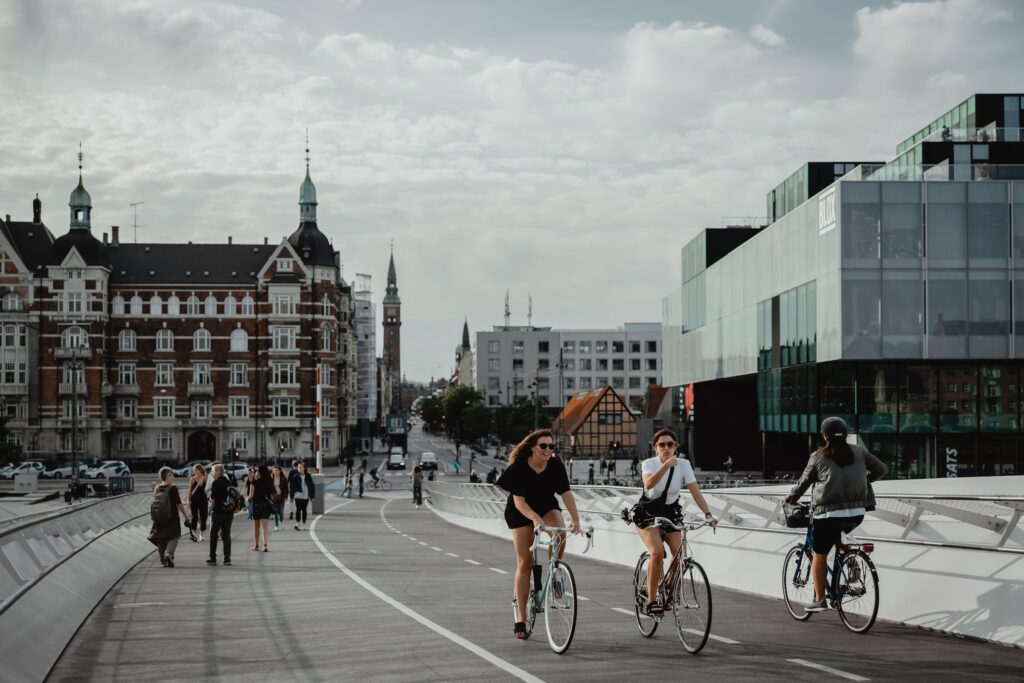
(photo: Febiyan on Unsplash)
Transport in the city is also organized in a way that facilitates combining the use of different means of transport – this also applies to bicycles: bus stops, metro and city rail stations are equipped with bicycle racks. Bicycles can also be taken on rail and subway cars (except during peak hours). Of course, the integration of modes of transport is not limited to bicycles and rail transport – six S-train lines run through Copenhagen, each of them reaching the suburbs, and on the way they intersect with lines leading further into suburban areas. In addition, four metro lines run through the very center of the capital of Denmark – interestingly, they run 24 hours a day and do not have strict timetables. Trains arrive every 2 to 4 minutes during peak hours and up to every 20 minutes on weekend nights. Six metro stations lie on the “S” train line, and four more also have access to other rail connections.
The picture of Copenhagen’s public transport is completed by a network of bus connections, which consists of three types of lines:
– “A”: they run with the biggest frequency and serve the city center,
– “S”: they connect the city center with the suburbs and run less frequently, but also have fewer stops, enabling them to cover long distances faster – they share some stops with the “A” lines, which provides transfer opportunities;
– “N”: night busses.
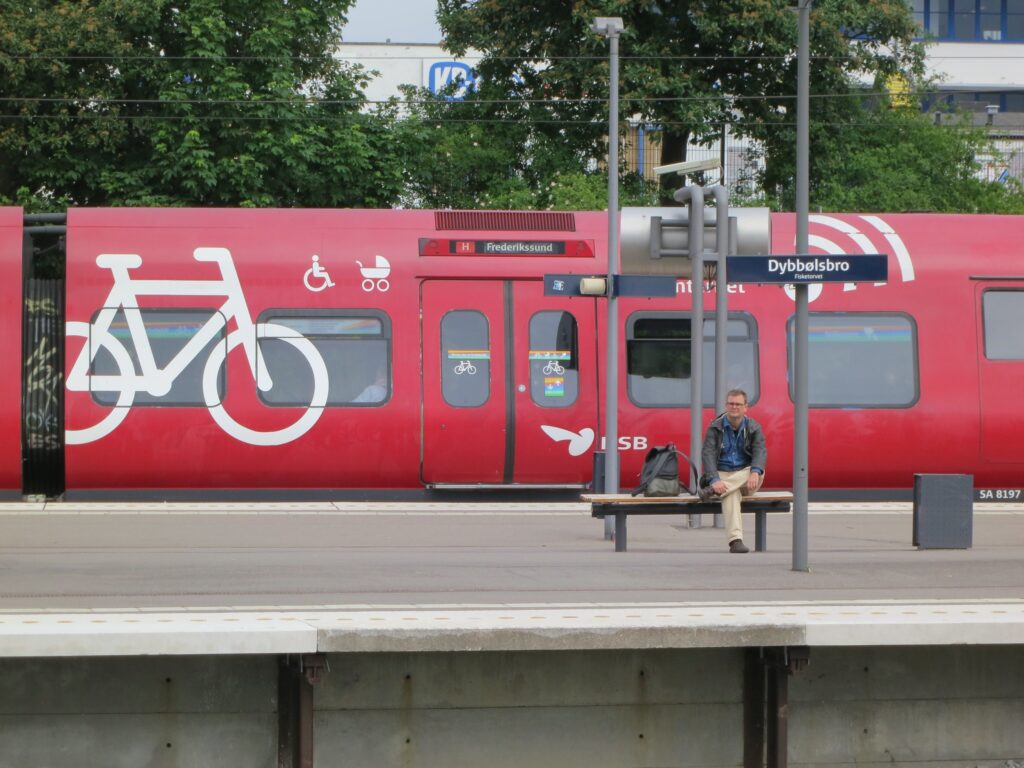
(photo: Planetgordon.com on Flickr)
Cycling infrastructure and public transport in the capital of Denmark form a truly coordinated system, which is an attractive alternative to cars – no wonder that from the Polish perspective the regulations of the LEZ in Copenhagen seem not very restrictive. They just don’t have to be, because with or without a zone – the inhabitants of Copenhagen can comfortably move around the city without a car.
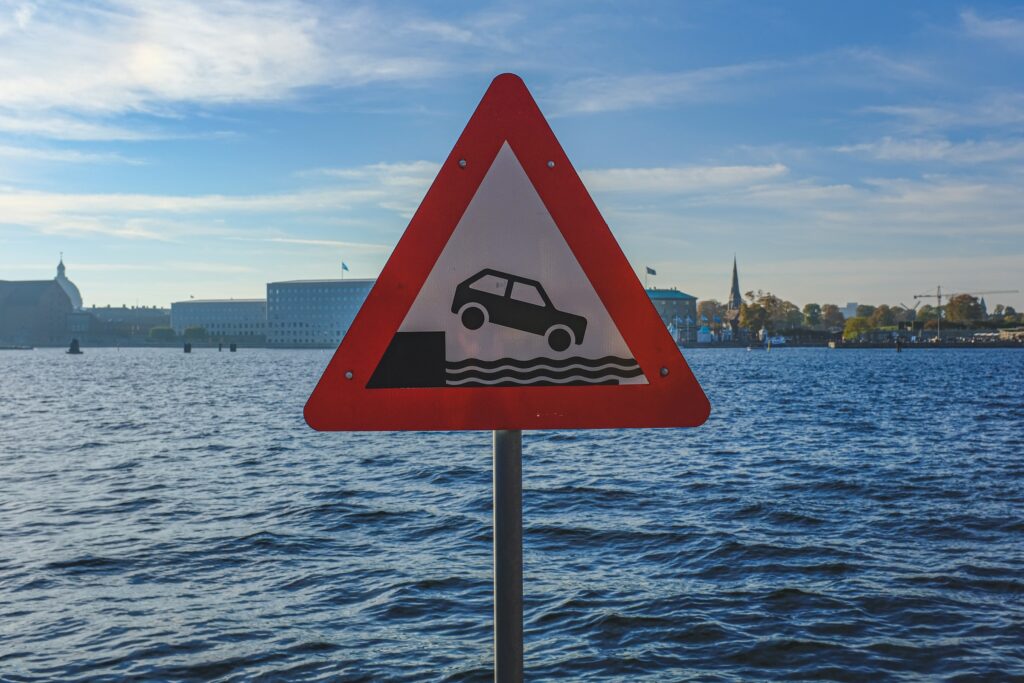
(photo: Jan Baborak on Unsplash)
The Zone was not built in a day
Considering the transport habits of the people, one might think that in such a city introducing a Zone is an easy task. However, the road to the creation of LEZ in Copenhagen was surprisingly bumpy. In 2003, the city authorities initiated efforts to create a Zone where particulate filters would be required for vehicles weighing more than 3.5 tonnes. After two years of waiting for a decision, the Danish Ministry of Justice rejected the application – arguing that the proposed regulations violated the rights of vehicle owners and were a form of expropriation. Of course, the legal systems are different, but similar arguments are also raised by opponents of Low Emission Zones in Poland. After an appeal, the Prosecutor General’s Office rejected this argument, emphasizing that if it were to be considered justified, any environmental protection regulations that introduce bans would be a violation of ownership. In 2006, an amendment to the environmental protection law was passed, which enabled the introduction of Low Emission Zones, while transferring matters related to their operation from the jurisdiction of the Ministry of Justice to the Ministry of the Environment. However, the regulations allowed the establishment of LEZ’s only in Denmark’s five largest cities: apart from Copenhagen, these are Aarhus, Alborg, Fredrikstad and Odense.
In 2007, the city of Copenhagen passed a formal decision to create the Zone – it was launched in September 2008. In the first stage, the entry ban covered the oldest diesel vehicles weighing more than 3.5 tons (Euro 2 standard), and in the second stage, in force from July 2010, it was extended to the Euro 3 standard, with which required particulate matter filters with at least 80 percent efficiency.
Initially, entry to the zone was controlled with stickers. Since June 2020, a camera system for remote license plate checking has been in operation. In March 2022, Danish cities gained the right to extend the ban on entering the zones to diesel-powered passenger cars as well – as mentioned above, Copenhagen took advantage of this opportunity due to the climate neutrality goal adopted by the city.
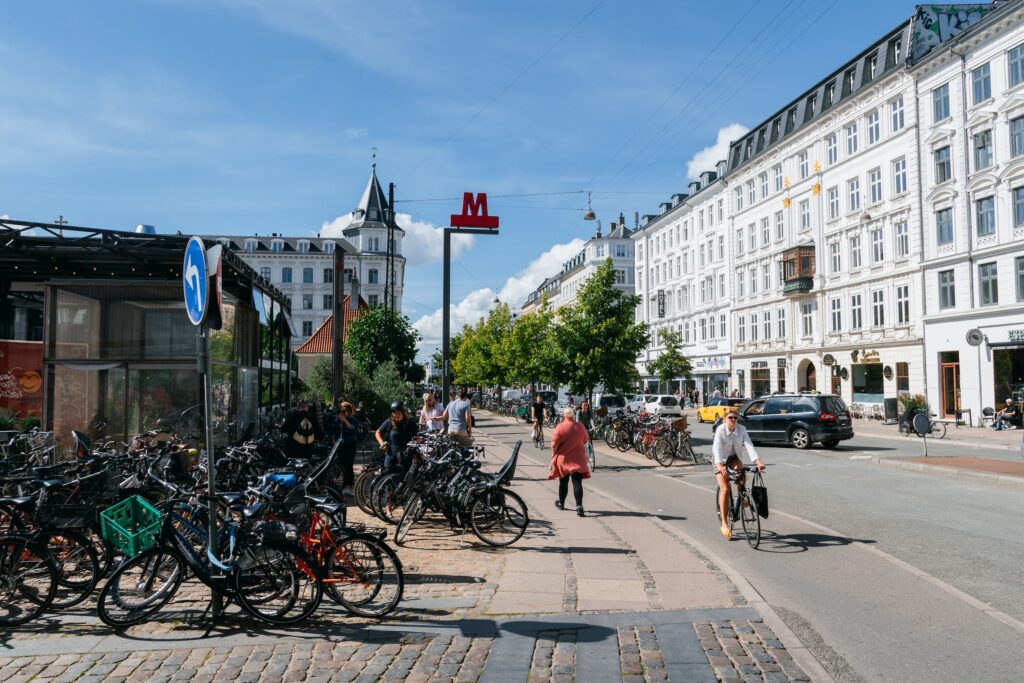
(photo. Kai Pilger on Unsplash)
Low emission transport first, a Zone – later
From the Polish perspective, the Copenhagen model of moving around the city may seem like it came from another planet. However, the example of the Danish capital shows a particular principle one should keep in mind when establishing Low Emission Zones in Poland. If a Zone is to be effective, it cannot be the forebear and sole tool for developing low emission transport. A local government which provides the inhabitants with attractive, coordinated zero and low emission alternatives to cars before the Zone itself is established, it will make life easier not only for them but also for itself – as it will not be faced with the impossible task of creating a Zone that can serve as a miracle cure for air pollution generated by transport.
(illustration photo: Max Adulyanukosol on Unsplash)
